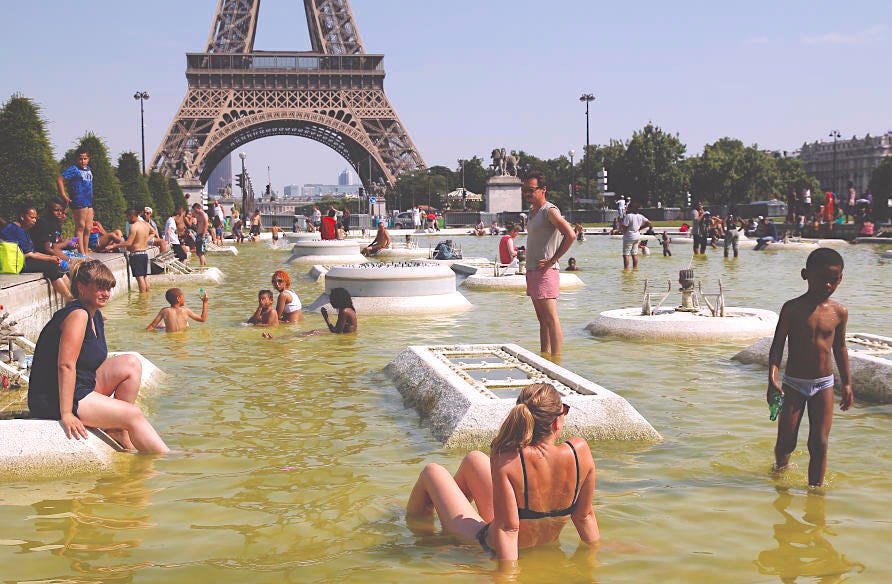Europe’s recent record-breaking heatwave led to thousands of heat-related deaths.
This is the result of climate change. Period.
Need-to-Know: Europe is now a heatwave hotspot
Here’s why the heatwave was so bad and how Europe has become a heatwave hotspot.
The Arctic is warming 4 times faster than the rest of the planet. In some parts, it is warming 7 times faster.
The Arctic is a key driver of weather in the Northern Hemisphere. A hotter Arctic is a big deal for the rest of us.
We like to say what happens in the Arctic doesn’t stay in the Arctic.
—Merritt Turetsky, Director of the Institute for Arctic and Alpine Research at the University of Colorado Boulder
Need-to-Know: The Arctic is warming 4X faster
The jet stream is a fast-flowing air current that travels west-to-east around the globe’s Northern hemisphere at around 10 km height. It is driven by the temperature difference between the cold air of the Arctic and hot air from the tropics. A hotter Arctic has reduced the temperature difference, slowing the jet stream.
Like a slow-moving river, a slower jet stream meanders and can stall during the summer, sometimes for weeks. This stall is called a “blocking event”. Blocking events are linked to the formation and persistence of a split in the jet stream over Northern Europe and Eurasia, according to research published a week before the heatwave in Nature Communications.
The persistence of double jet stream events accounts for long-lasting heat waves that are now 3 to 4 times more frequent in Europe than similar heat waves in the U.S. or Canada, the study found.
Just think about the hot and dry summers of 2018, 2019, 2020 and the recent heatwave in Europe – and this is expected to get worse.
—Lead researcher, Efi Rousi of Germany’s Potsdam Institute for Climate Impact Research (PIK):
Need-to-Know: Heatwaves now happen 3 to 4 times more often in Europe than North America
Welcome to Need to Know: Science & Insight, my personal newsletter that looks at what we Need-to-Know at this time of pandemic, climate emergency and unraveling of nature’s life supports.Temperatures in England topped 40 degrees C. That level of summer heat was not expected until 2050 according to a 2019 study. The same study says cities in the Northern Hemisphere will have the climates of cities more than 1000 kilometers to their south have today.
Some 115 major cities including Washington and 16 other U.S., as well as Kuala Lumpur, Jakarta, Rangoon, and Singapore will face climate conditions no other city in the world has ever endured. That’s the world in 2050 IF we reduce emissions enough for 2 degrees C of warming.
Actual carbon emissions are on a 3 to 4 degree C trajectory. Sorry, but that’s the science says.
Need-to-Know: Many of the world’s major cities will face climates never seen before by 2050
The good news is this: How hot it gets is still up to us. So what to do?
#1. Talk about it. That’s the most important thing you can do.
(The majority of people in every country are worried about climate change, but rarely talk about it.)
I highly recommend climate scientist Katharine Hayhoe’s 15 minute TED talk on how to talk about climate change, even to someone in denial.
#2 Solutions and ideas come from people talking about how they are reducing their carbon footprint.
I’ll start. I walk or ride my bike everywhere I can. (I just gave my spare bike to a Ukrainian refugee so he can ride too!) I like vegetarian food and eat fish and meat occasionally. I’ve run for election as a Green Party candidate which was a great opportunity to talk with lots of people.
How about you?
(Go to NtK website and use comment section to let me know what you’re doing.)
Together we can figure what we need to do. And how to make it happen.
Until next time, be well.
Stephen




